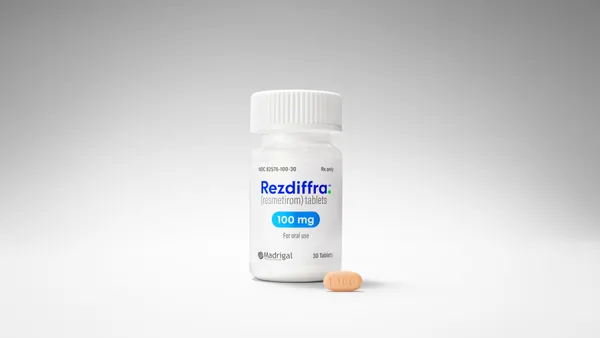2008 VIEW on Medical Education EVIDENCE BASED CME CME2 Since 2002, when the AAFP established criteria for evaluating and categorizing the clinical content of CME, providers have been incorporating the principles of evidence based medicine (EBM) into their programs — with varying degrees of success. EBM CME is an opportunity for physicians to improve their practices as well as patient outcomes. For providers, an evidence based approach to CME can improve the integrity of the content, which can help physicians improve their practices as well as lead to better patient outcomes. Raising the Bar The CME arena, as a whole, has been criticized for fielding programs that lack scientific rigor, sponsor bias — perceived or otherwise, and murky fair balance. The adoption of the latest round of ACCME guidelines is a step in the right direction to raising the bar and the image of the industry, but it’s also the responsibility of accredited CME providers to ensure that program content is credible and based in fact, addresses identified gaps, and focuses on very specific learning objectives. Physicians are demanding better information. Their time is precious and they face many pressures, therefore any CME program has to fit into their busy lifestyles and address maintenance of certification (MOC) requirements. As part of the MOC requirement, physicians must complete a level of self-assessment of their practices, their knowledge, and their performance as mandated by their specialty board. Therefore, the more focused the education is the better a physician can meet his or her MOC requirements. The content of each learning intervention must be sharpened, refined, and targeted to exhaustively analyze all learning goals based on the content design criteria: Inclusion — what is to be included and what is to be excluded; Criticality — the relative importance of each subject area; Granularity —the degree of detail required for each subject area; Sequencing — the order in which the information is presented; and Competency — the required level of learner capability in each subject area. Raising the bar requires more than addressing what is offered as part of the learning activity, it also requires that providers develop evidence based needs assessment data, using a detailed educational gap analysis process and effective feedback mechanisms that capture physician learning metrics. Improving CME with Better Metrics Outcome data, which has been a buzz phrase for several years, is the measure by which CME is evaluated in terms of affecting patient care. But the level by which the outcomes are measured has become an even hotter issue; in the past, it would be enough to measure if a physician learned something, but this is no longer sufficient. If the CME bar is to be raised and the activities that are developed and produced are to be measured effectively, then it’s important to ensure that education is resonating and having an impact not only on physicians and their practices, but their patients as well. Even as CME providers are tasked with the goal of improving patient outcomes, there is little to no discussion around patient education metrics and measuring changes in patient adherence. In the past, this outcome metric has proven to be elusive, but it can be obtained through partnerships with stakeholders that have access to patient data. Until patient outcome metrics are developed and perfected, this is a component of the CME model that will continue to be a challenge, and the best CME providers can do is hope to influence physician behavior and physician practices. Evolving Learning Techniques Physician feedback reveals that didactic, one dimensional learning activities are not as effective as interactive, multidimensional techniques in terms of improving knowledge retention as well as competence months after a program. While it’s important that CME providers develop content in the format that physician learners prefer, it’s equally crucial to keep pace with evolving learning techniques, such as Podcasts, Webbased interactive programs, and case based learning. Case based learning, in particular, is proving to be a very effective way for physicians to apply and reinforce learned clinical knowledge to real life patient scenarios. CME providers face many challenges, but by providing credible and relevant information through appropriate and varied learning methods and developing workable strategies for physicians to apply the information they can ultimately influence physician behavior in line with his or her self-assessment and improve patient care and outcomes. CME CME2’S mission is to elevate medical education from a matter of pass/fail to learning mastery that measurably impacts healthcare professionals’ behavior and ultimately improves patient care. For more information, visit cme2.com. Evidence Based CME That Delivers Best Practices for Developing Evidence Based CME By addressing major and critical educational gaps, providers can begin to affect the desired physician behavior change by: # Focusing on gaps that exist between current and best practices # Developing content that is based on the identified gaps # Improving elements of provider competency, performance in practice, and/or outcomes of patient care # Demonstrating a commitment to engage with larger learner environments to optimize educational results # Planning interventions that are independent and present a fair balanced view of the topic # Ultimately improving the quality of care, patient safety, and cost effectiveness in healthcare CME providers face many obstacles, but by providing focused, credible, and relevant information that physicians can use; fielding appropriate program experts and thought leaders; and providing physicians with workable strategies to apply the information, they can ultimately influence physician behavior in line with his or her self-assessment and improve patient care and outcomes. Cathy Pagano Executive Director Jane Perrotta Clinical Director Why Physicians Trust Us Integrity: A steadfast adherence to a strict ethical code Reengineering Medical Education to Achieve Mastery in Learning Mastery Intervention Solutions Research Planning Intervention Development Audience Development Outcomes Measurement Design Criteria . Inclusion/Exclusion . Criticality . Granularity . Sequencing . Competency For more information and to view physician testimonials go to www.cme2.com Intensifying the Clinical Significance of Medical Education ACCME accreditation with exemplary status in two essential areas: Mission and Needs Assessment.
An article from


Evidence-Based CME That Delivers
Filed Under:
Commercialization









